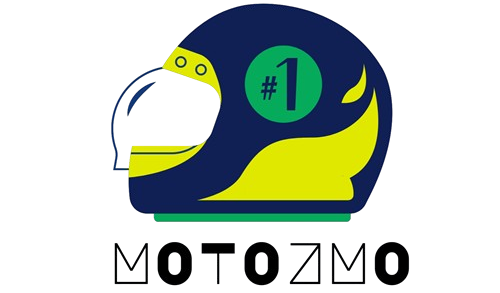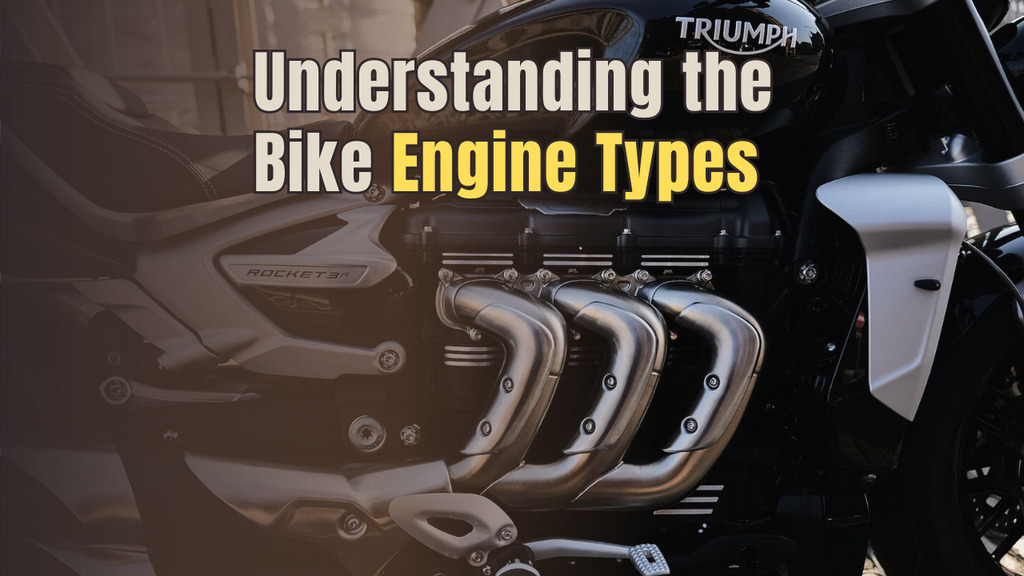Understanding the different bike engine types is crucial when choosing your perfect motorcycle. The engine is the heart of any motorcycle, and its cylinder layout, size, and cooling system will hugely impact factors like power, weight, reliability and maintenance costs.
Before bike shopping, it’s important to consider how many cylinders your ideal bike engine name will have – whether it’s a single, parallel twin, V-twin, or inline configuration. The number and position of cylinders in the motorcycle engine will determine qualities like vibration, torque, and top speed.
We’ll explore the various bike engine cylinder options so you can pick the motor that best matches your riding needs and style.
The Available Bike Engine Types
Learning the different names and how they work empowers you to choose the perfect match for your route and riding temperament. With so many great options, exploring engine varieties is part of the fun of motorcycling.
1. Single Cylinder
The single cylinder is one of the most basic motorcycle engine configurations. Riding a faithful single means depending on a lone piston to keep your wheels moving.
While simple to maintain, the solo song of a single can emit an irritating vibration at interstate velocities. Still, beginners love the tame power and prices of singles like the Honda Grom and Kawasaki KLX110.
2. Parallel Twin
A step up in cylinders is the parallel twin engine name. With a pair of pistons pumping side-by-side, the vibrations are variously vanquished. Workhorse parallels suit both new riders and seasoned types seeking sport without the snarling high-revs of bigger multis.
Bikes such as the Yamaha MT-07 middleweight naked and retro-tastic Kawasaki W800 charm commuters with their twin temperament and torque without the towering price of more complex configurations.
SEE MORE: The Surprising Science Behind Motorcycle Engine Weight Distribution
3. V-twin/L-twin
The vibrations of parallel twins can be further vanquished by arranging the cylinders at an angle. In a V-twin setup, two cylinders are situated in a proud “V” formation, each housed in their own crankcase. This popular style is royalty in the cruiser realm – just ask Harley and their devotees. For a sportier spin, Ducati forever forged the mean L-twin layout, with one cylinder erect and one horizontal.
Whether in a sultry V or rebellious L, the staggered cylinders give great girth and grunt across the powerband. Cruisers like the Harley Street Glide and sportbikes like the Ducati Monster show there’s no one true way to enjoy the operatic roar of each pistonic pop.
4. Inline
Meanwhile, inline engines align their cylinders straight in a row. This allows more cylinders and therefore more muscles. Four, six, and even eight cylinders stands in a straight-laced inline in bikes like Honda’s legendary Gold Wing or sportbikes such as the Kawasaki Ninja H2R.
Rev happy and ramrod fast, the perfectly poker-faced nature of inlines comes at the cost of tingling toes – these engines vibrate with velocity. But the sheer seismic power easily offsets the physical unease.
5. V4
Some motorcycle engine names double down on cylinders with wild V4 configurations. Basically two V-twin engines melded as one, the result is a compact yet mighty four-cylinder punch.
Ducati perfected the V4 layout with bikes like the Panigale, where each quartet of pistons unleashes a élan unlike its brawny V-twin predecessors.
6. Flat Twin
BMW possesses an outlier engine design of their own – the flat twin, or boxer. As the name lays it, these two cylinders lie on their sides like twin tumblers, revolving up and down rather than back and forth. This gives BMW bikes like the R1200GS legendary balance thanks to virtually no angular momentum, plus stellar cooling from the horizontal positioning.
Although heavier than parallel twins, the reduced vibrations allow boxers and their ilk to leisurely lope rather than buzz. Riders prize the plush ride and seamless power delivery whether trundling to work or traversing continents.
However, the unique architecture brings unique maintenance demands that push up the price of parts.
7. Rotary
For thrill-seekers, the rotary Wankel engine style promises a joyride unlike any other gas gulping motorcycle. Instead of pistons, triangular rotors in their unique housing spin to compress fuel and air.
Rev happily while compact and smooth, these unusual internals once powered the legendary Mazda RX bikes of yore. High-revving fun personified, though complexity means high repair costs for the few models still in existence like the Hercules W2000.
8. Electric
Some say the bike engine of the future is electric, and for good reason – there’s no messy mixing of fuel and oil, zero direct emissions, and smooth power delivery regardless of rpm.
Companies like Harley are getting in on the act with ever-evolving electric motorcycle models like the LiveWire. There are benefits like decreased maintenance and cheap “fuel” costs if you can plug into solar panels at home. range is improving every year too.
SEE MORE: Motorcycle Engine Keeps Cutting Out: Reasons and Fixes
Two-Stroke vs Four-Stroke Motorcycle Engines
When buying a new bike, you’ll need to consider whether a two-stroke or four-stroke engine best suits your style of riding.
Two-strokes complete the necessary intake, compression, power, and exhaust cycles in just two piston strokes rather than four. This allows for more frequent power pulses, usually translating to quicker acceleration. Classic dirt bikes like the Kawasaki KX and Yamaha YZ models epitomize the thrills of two-stroke torque.
However, two-strokes are less efficient and produce more emissions since they require pre-mixing oil into the fuel. More frequent engine rebuilding is also required.
Modern emissions standards have led most manufacturers to switch to four-strokes. These complete the engine cycles over four strokes, smoothing out power delivery for street riding.
Four-stroke trail machines like the Honda CRF and Suzuki DR-Z offer nearly as much thrills with less frequent fueling. Efficiency gains mean you’ll spend less at the pumps too with a four-stroke motorcycle engine.
Motorcycle Engine Cooling System: Air Cooled vs Liquid Cooled
Another important decision when choosing a bike cylinder type is whether you prefer an air-cooled or liquid-cooled cooling system.
Air-cooling relies on good old wind flow through strategically placed fins to whisk away engine heat. Iconic cruiser and vintage brands like Harley Davidson and Triumph use this no-nonsense approach, which saves weight and complexity versus liquid. However, air-cooled motors can run hotter and lose power on slow rides without breeze.
Most modern sports and touring bikes now swear by liquid-cooled methods. Motorcycle engines with a water jacket and radiator circulating coolant maintain lower operating temperatures for consistent power delivery in all conditions.
Manufacturers like Honda, Kawasaki, and Suzuki stick with liquid cooling to help bikes hammer out maximal horsepower numbers lap after lap. Disadvantages include added fluid maintenance requirements and a higher chance of leaks compared to simple air-cooled designs.
Motorcycle Engine Capacity and Power
When shopping for a motorcycle, you’ll often see specs listed as engine capacity measured in cubic centimeters, or CC’s. Generally speaking, higher CC motors deliver more power. A 650cc twin will punch harder than a 300cc single, for example.
But capacity isn’t the whole story. Design factors like number of cylinders and configuration play huge roles too. A thunderous V-twin like the Harley-Davidson Fat Boy pushes out porous low-end grunt from its mammoth 1830cc engine. Meanwhile, a high-strung 600cc inline-4 supersport rocket will outdrag almost anything despite smaller pistons.
SEE MORE: What Is CC In Bike Engine and How it Impacts Ride’s Performance?
As a general guideline, anything under 300cc is suitable for beginners or commuters after basic transportation. Mid-range bikes from 300-700cc deliver plenty of pep without being overwhelming. And big-bore shockers over 1000cc are made for cruising highways in comfort or instilling fear with their ferocity on sportbikes.
Additional Classifications of Bike Engine Types
- Single vs multi-cylinder
- Layout positioning
Beyond stroke and cooling methods, bikes can be further categorized by cylinder counts.
As discussed, singles only employ one piston, while doubles, triples and beyond indicate the number of additional pistons pumping power. Multi-cylinder engines tend to run smoother thanks to each cylinder balancing the other, though excess cylinders also bring excess weight and cost.
Layout positioning also affects ride quality – where the cylinders reside in relation to the frame and crankcases.
Common layouts like parallel and V-twins concentrate mass lower for optimal balance through turns. But mounting an inline-4 higher provides razor-sharp handling at a compromise of jitteriness. Contemporary engine configurations leverage the latest in engineering to maximize strength and comfort.
New riders seeking fundamentals should explore simpler single and twin-cylinder bikes for their forgiving nature. As skills progress, examining multi-cylinder machines with handling-friendly layouts like Ducati V4s allows utilizing higher horsepower placidly on twisty roads too.
Choosing the Right Type of Bike Engine
With so many marvelous motorcycle engine names to pick from, deciding what’s right can seem bewildering. But focusing first on your intended use makes the choice much clearer.
Will it be zinging about town, long hauls on highways, or spirited trail blasting? Cruisers require an engine with sturdy low-end grunt, while sports bikes demand an eager-to-rev screamer. Single cylinders suit basic runs, while multi-pots satisfy speed demons.
Cooling needs, maintenance habits, and your mechanical know-how also guide the choice. Liquid-cooled motors demand less upkeep than air-cooled, but two-strokes are simpler than four-strokes. Start with an easy engine if you’re green.
Don’t forget ergonomics! Sit on bikes to see if the cylinders reside in a natural riding position. Comfort and control should come before outright power figures.
With purpose and body in mind, the perfect engine practically selects itself. Just don’t forget – any bike is sporty if you’re having fun on two wheels!
FAQs About Bike Engine Types
What’s the difference between a single and twin-cylinder engine?
Twins have two pistons that fire alternately, creating smoother power delivery than a single. However, singles tend to be lighter and simpler mechanically.
What are the benefits of a V-twin engine?
V-twins like Harley-Davidsons produce a distinctive rumble due to uneven firing intervals. They also typically have great low-end torque for cruising.
How many cylinders do performance bikes have?
Most high-powered sportbikes have inline 4-cylinder engines for their high revving capability and power-to-weight ratio. However, some excellent performance triples are also available.
What’s the most common motorcycle engine size?
600cc is a very popular engine displacement for everything from commuters to sports bikes. Larger displacements include 750cc, 1000cc and bigger for maximum power.
What fuels can motorcycle engines use besides gasoline?
Some can run on ethanol blends, and diesel engines exist but are rare. Alternative fuels gaining interest include biomethane/CNG and hydrogen fuel cells. Electric motors are also increasing.
Is a 2-stroke or 4-stroke better for dirt bikes?
For off-road, 2-strokes tend to be lighter and deliver explosive power ideally suited for jumping and wheelies. 4-strokes offer more torque down low.
How do Wankel rotary engines compare to pistons?
Rotaries have fewer moving parts but produce more vibration. They rev very high and deliver smooth power though lack low-end torque of pistons. Most are in older carb Nortons and modern RX-8s.




